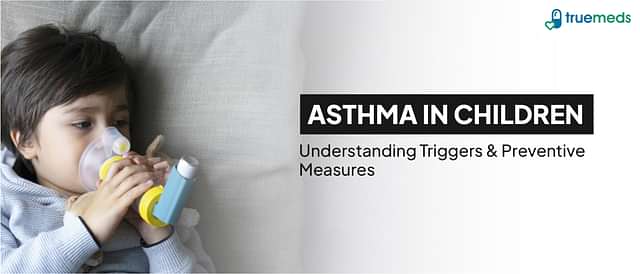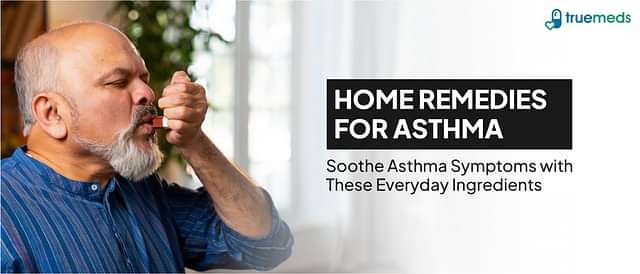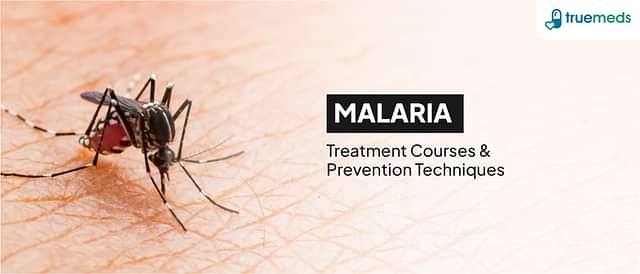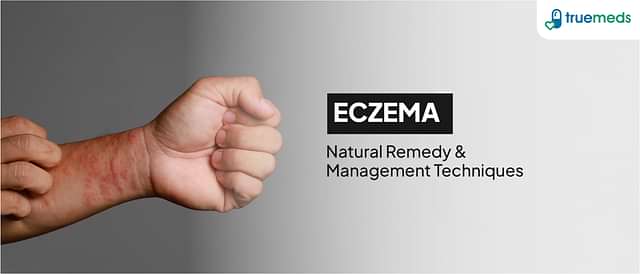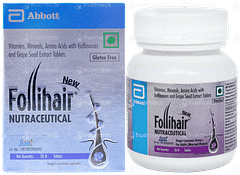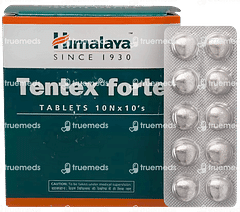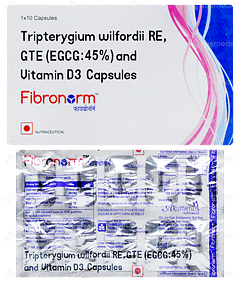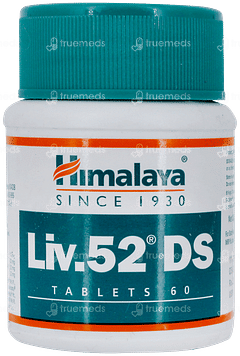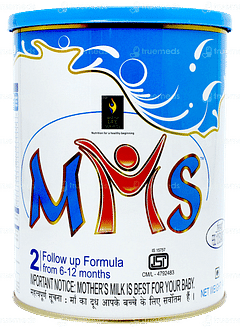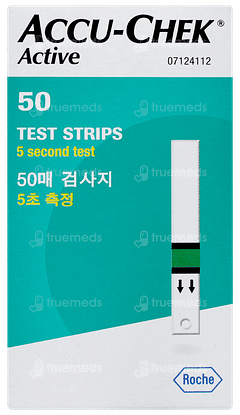Sinusitis
Sinusitis, or sinus infection, is a common condition characterised by inflammation of the sinuses. It can be caused by viruses, bacteria, fungi, or allergies, leading to symptoms such as facial pain, nasal congestion, and headaches. Sinusitis is classified into various types based on the duration and cause of the condition.
Last updated on : 11 Apr, 2025
Read time : 14 mins
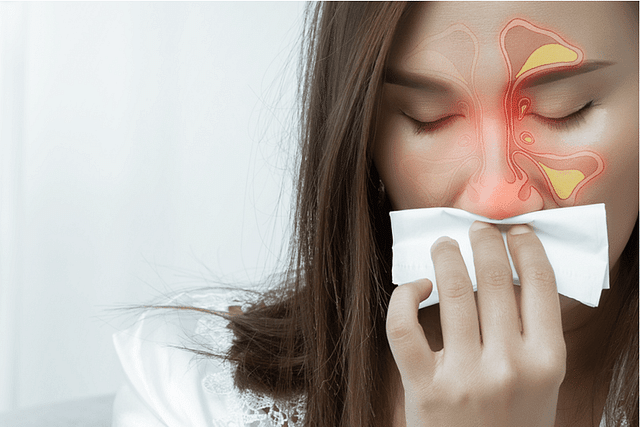
Overview of Disease
Sinusitis, a prevalent health condition affecting millions globally, is also known as a sinus infection, and can significantly impact an individual's quality of life. Understanding the causes, symptoms, and types of sinusitis is crucial for providing appropriate treatment and management. Here, we will explore the details of sinusitis, its various types, and essential information to help readers better comprehend this condition.
What is Sinusitis (Sinus Infection)?
Sinusitis, or sinus infection, is a condition characterised by the inflammation or swelling of the tissue lining the sinuses, which are air-filled cavities located in the face. The primary function of the sinuses is to produce mucus that drains into the nose, helping to keep it clean and free from bacteria, allergens, and other germs. However, when the sinuses become blocked and filled with fluid, it creates an environment conducive to the growth of germs, leading to an infection. Sinusitis can be triggered by various factors, including viruses, bacteria, fungi, and allergies. Recognising the signs and understanding the underlying causes of sinusitis are essential for seeking appropriate medical attention and managing the condition effectively.
Key Factors about Sinusitis
| Category | Details |
| Also Referred as |
|
| Commonly Occurs In |
|
| Affected Organ |
|
| Type |
|
| Common Signs |
|
| Consulting Specialist |
|
| Treatement Procedures |
|
| Managed By |
|
| Mimiciking Condition |
|
Types of Sinusitis
Sinusitis can be classified into several distinct types based on the duration and underlying cause of the condition. These types include:
Acute sinusitis: This type of sinusitis lasts up to 4 weeks and is typically caused by a viral infection, such as the common cold.
Subacute sinusitis: Lasting between 4 to 12 weeks, subacute sinusitis often results from a bacterial infection or allergies.
Chronic sinusitis: When sinusitis persists for more than 12 weeks, it is classified as chronic. This type can be caused by repeated or poorly treated acute infections, allergies, or anatomical abnormalities.
Recurrent sinusitis: Characterised by multiple episodes of acute sinusitis occurring within a year.
Fungal sinusitis: A rare type of sinusitis caused by fungal infections, which can be either invasive or non-invasive.
Allergic sinusitis: This type of sinusitis is caused by an allergic reaction to environmental irritants, such as dust, pollen, or smoke.
Symptoms of Sinusitis
Sinusitis occurs when the sinuses become inflamed and swollen. This leads to various uncomfortable symptoms that can affect daily life. Common symptoms of sinusitis include:
Thick, discoloured mucus from the nose or postnasal drip
Blocked or stuffy nose (congestion) making it difficult to breathe through the nose
Pain, tenderness, and swelling around the eyes, cheeks, nose, or forehead that worsens when bending over
Reduced sense of smell and taste
Other symptoms may include ear pressure, headache, aching in the teeth, cough, sore throat, bad breath, and tiredness. The duration and severity of these symptoms can help categorise sinusitis into acute or chronic.
Causes of Sinusitis
Sinus infections are caused by inflammation or infection of the sinuses due to various factors. The primary causes include:
Viral infections: Most commonly, the common cold virus.
Bacterial infections: Can develop from blocked sinuses or secondary to a viral infection.
Fungal infections: Less common but can occur, especially in individuals with weakened immune systems.
In addition to these primary causes, several other factors can contribute to the development of sinusitis:
Allergies: Can cause nasal and sinus passages to swell, leading to sinusitis.
Nasal polyps: Growths in the sinuses that can block mucus drainage.
Deviated nasal septum: Can obstruct sinus openings and lead to infection.
Other medical conditions: Such as cystic fibrosis or HIV/AIDS, which can predispose individuals to sinus infections.
Risk Factors
Several factors can increase the likelihood of developing sinusitis, a common sinus infection that causes inflammation of the sinus tissues.
1. Anatomical factors
Nasal polyps or other anatomical defects that obstruct the sinuses
2. Infections
Viral infections, such as the common cold or flu, which are the most common cause of acute sinusitis
Bacterial infections, which can follow viral infections or occur independently
Fungal infections, more common in people with weakened immune systems
3. Allergies
Allergic rhinitis (hay fever) can cause inflammation and blockage of the sinuses
Exposure to allergens such as dust, pollen, or pet dander can trigger sinusitis symptoms
4. Environmental factors
Air pollution and smoke exposure
Changes in air pressure, such as during air travel or scuba diving
5. Medical conditions
Asthma, which can cause inflammation in the airways and increase the risk of sinusitis
Cystic fibrosis, a genetic disorder that affects mucus production and clearance
Immune system disorders, such as HIV/AIDS or immunosuppressive medications
6. Lifestyle factors
Smoking or exposure to secondhand smoke
Frequent use of nasal decongestant sprays, which can lead to rebound congestion and worsen sinusitis
Complications
While sinusitis is usually manageable, it can lead to complications if left untreated or if the infection spreads beyond the sinuses.
1. Chronic sinusitis
Acute sinusitis that lasts for more than 12 weeks or recurs frequently can develop into chronic sinusitis
Chronic sinusitis can cause persistent symptoms and may require long-term treatment
2. Orbital complications
Infection can spread to the eye socket (orbit), causing:
Periorbital cellulitis (infection of the eyelid and skin around the eye)
Orbital cellulitis (infection of the fat and muscle tissue around the eye)
Abscess formation
Orbital complications can lead to vision problems, including blindness if left untreated
3. Intracranial complications
In rare cases, sinusitis can spread to the brain or the membranes surrounding it (meninges), causing:
Meningitis (inflammation of the meninges)
Brain abscess
Epidural or subdural empyema (collection of pus between the skull and the brain)
Intracranial complications are serious and can be life-threatening
4. Bone infection
Osteomyelitis, an infection of the bones surrounding the sinuses, can occur in severe cases of sinusitis
5. Mucocele formation
A mucocele is a cyst-like collection of mucus that can form in the sinuses due to blockage
Mucoceles can cause bone erosion and lead to complications if left untreated
Prevention of Sinusitis
Preventing sinusitis involves a combination of lifestyle changes, avoiding irritants, and maintaining good hygiene. Here are some key strategies:
1. Maintain good hygiene
Frequently wash your hands, especially during cold and flu season, to prevent the spread of infections.
2. Keep your sinuses moist
Use a humidifier to keep the air moist, and clean it regularly to avoid mold and mildew.
Drink several glasses of water a day to keep mucus thin and loose.
Use saline nasal sprays to keep your nasal passages moist.
3. Manage Allergies and Avoid Irritants
Keep your allergies managed well and avoid allergens such as dust, pollution, and pollen.
Avoid smoking and secondhand smoke, as well as other irritants like chemical fumes and smoke.
4. Practice healthy habits
Eat a balanced diet rich in fruits and vegetables to keep your immune system strong.
Exercise regularly and get plenty of sleep to maintain overall health.
Reduce stress levels, as stress can weaken your immune system.
5. Avoid infections
Get an annual flu shot to prevent influenza, which can lead to sinusitis.
Avoid close contact with people who have colds or other upper respiratory infections.
6. Other preventive measures
Irrigate your sinuses regularly with a saline sinus wash to clear out mucus and debris.
Consider taking oral probiotics after antibiotics to replenish the natural biome of the sinuses.
Diagnosis & Tests
Diagnosing sinusitis involves evaluating symptoms and performing physical examinations, sometimes in combination with imaging tests. The diagnostic process typically includes:
Physical examination: A doctor will examine the nose, throat, and ears for signs of inflammation, swelling, or mucus buildup. They may also check for tenderness in the face and forehead.
Nasal endoscopy: A thin, flexible tube with a light and camera (endoscope) may be inserted into the nose to visually examine the sinuses and detect any abnormalities.
Imaging tests: In some cases, imaging tests such as CT scans or MRIs may be ordered to provide detailed images of the sinuses and identify any structural issues or complications.
Allergy tests: If allergies are suspected as a contributing factor, allergy tests may be performed to identify specific allergens.
Mucus culture: A sample of mucus may be collected and sent to a laboratory to identify any bacterial or fungal infections.
Treatment & Management
Sinusitis can be managed and treated through a combination of self-care, over-the-counter medications, and, in some cases, prescription medications:
1. Prescription Medications
In cases where over-the-counter treatments are insufficient, prescription medications may be required. Antihistamines like Chlorpheniramine and Dimetindene are effective when allergies contribute to nasal congestion and inflammation. In more severe cases, anti-inflammatory agents such as Morniflumate may be prescribed to reduce swelling and discomfort. If the sinus infection is bacterial, antibiotics like Amoxicillin, with or without Clavulanate, are often the first-line treatment. The typical course for adults lasts 5-10 days, while children may require 10-14 days. For patients allergic to penicillin or those who do not respond to initial treatment, alternative antibiotics are available to ensure effective bacterial eradication.
2. Over-the-Counter Medications
Over-the-counter medications play a crucial role in managing sinusitis symptoms, providing relief from congestion, pain, and inflammation. Saline nasal sprays help rinse and clear nasal passages, reducing irritation and mucus buildup. Nasal corticosteroids such as Fluticasone and Budesonide effectively reduce swelling in the nasal passages, preventing further obstruction. Decongestants like Phenylephrine, Naphazoline, and Xylometazoline work by constricting nasal blood vessels, offering temporary relief from congestion. However, prolonged use of nasal decongestants should be avoided to prevent rebound congestion. Additionally, pain relievers such as Acetaminophen, Ibuprofen, and Aspirin help manage sinus headaches and facial pain. It is important to note that aspirin should be avoided in children and teenagers due to the risk of Reye’s syndrome.
3. Immunotherapy
For individuals whose sinusitis is triggered or worsened by allergies, immunotherapy can be an effective long-term solution. Allergy shots help desensitise the immune system to specific allergens, reducing inflammation and preventing recurrent sinus infections. This treatment involves receiving gradually increasing doses of the allergen over time, allowing the immune system to develop a tolerance. Immunotherapy is particularly beneficial for patients with chronic allergic sinusitis who do not find relief through conventional medications. By addressing the root cause of allergic reactions it helps minimise nasal inflammation and enhances overall respiratory health.
4. Self-Care and Home Remedies
- Rest helps the body fight the infection and speed recovery
- Drinking plenty of fluids to keep the sinuses moist
- Using a warm compress on the nose and forehead to lessen pressure
- Breathing in steam from a bowl of hot water or a hot shower to ease pain and help mucus drain
- Nasal lavage using a neti pot or a specially designed squeeze bottle to clear the sinuses
Living with Disease
Living with sinusitis can be challenging, but effective management strategies can significantly improve quality of life. Here are some tips for maintaining a healthy lifestyle and ensuring regular medical check-ups post-diagnosis.
1. Maintain nasal hygiene
Regular nasal irrigation using saline solutions can help clear mucus and allergens from the nasal passages. This can be done with a neti pot or saline sprays, which are widely available. Aim to perform this daily, particularly during allergy seasons or when symptoms flare.
2. Stay hydrated
Drinking plenty of fluids is crucial. Hydration helps thin mucus, making it easier to drain and reducing pressure in the sinuses. Warm beverages, such as herbal teas, can also provide soothing relief.
3. Manage allergens
Identify and minimise exposure to allergens that may trigger sinusitis symptoms. This includes keeping your living space clean, using air purifiers, and avoiding smoking or secondhand smoke. Regularly changing air filters in your home can also help reduce irritants.
4. Utilise humidity
Using a humidifier in your home can keep nasal passages moist, especially in dry climates or during winter when heating systems are in use.
5. Regular medical check-ups
Schedule regular appointments with your doctor to monitor your condition. Discuss any persistent symptoms or changes in your health to ensure appropriate treatment adjustments.
When to See a Doctor?
While many cases of sinusitis can be managed at home, certain symptoms require prompt medical attention. Call your doctor if you experience:
Severe pain or swelling in your face or forehead
A persistent fever above 101°F (38.3°C)
Symptoms that last more than 10 days or keep returning
Mucus discharge that is yellow, green, or bloody
Difficulty breathing or shortness of breath
Changes in vision or severe headaches
Neck stiffness or confusion
Worsening symptoms despite home treatment
Key Takeaways
Sinusitis is a common condition characterised by inflammation of the sinuses, leading to symptoms such as nasal congestion, facial pain, and mucus discharge.
Risk factors for sinusitis include allergies, viral infections, structural abnormalities in the nose, and a weakened immune system.
Sinusitis can be acute (lasting up to four weeks) or chronic (persisting for over 12 weeks).
Preventing sinusitis involves maintaining good hygiene, keeping sinuses moist, managing allergies, practising healthy habits, and avoiding infections.
Living with sinusitis requires a combination of medical treatments, lifestyle adjustments, self-care practices, and sometimes alternative therapies.
Seek medical attention if you experience severe symptoms, persistent fever, prolonged or recurrent sinusitis, or worsening symptoms despite home treatment.
By understanding the causes, symptoms, and management strategies for sinusitis, you can take steps to prevent the condition and minimise its impact on your quality of life.
FAQs
What is the primary reason for developing sinusitis?
The main cause of sinusitis is typically an infection or inflammation of the sinus lining, often due to viral infections, allergies, or bacteria.
What are three common sinusitis symptoms?
Three common symptoms of sinusitis include facial pain and pressure, nasal congestion with thick discharge, and headaches accompanied by fatigue.
What are the treatment options for sinusitis?
Treatment for sinusitis may include rest, decongestants, fluids, antibiotics (if bacterial), nasal corticosteroids, and in some cases, surgery for chronic conditions.
Is it possible to completely cure sinusitis?
While acute sinusitis usually resolves with treatment, chronic sinusitis may require long-term management and lifestyle changes to prevent recurrence.
How can I unblock my sinuses?
To clear blocked sinuses, try using a humidifier, applying warm compresses, using saline nasal sprays or rinses, and taking decongestants or antihistamines.
What is the typical duration of a sinus infection?
Acute sinusitis typically lasts less than four weeks, while chronic sinusitis can persist for 12 weeks or more, often with recurring episodes.
Which medicines are most effective for treating sinus problems?
The best sinus medicines depend on the cause but may include decongestants, antihistamines, nasal corticosteroids, antibiotics, and over-the-counter pain relievers.
References
Kennedy, P., & Borish, L. (2013). Chronic sinusitis pathophysiology: The role of allergy. American Journal of Rhinology & Allergy, 27(5), 367-371. https://doi.org/10.2500/ajra.2013.27.3906
National Library of Medicine. (2021, April 9). Sinusitis. MedlinePlus. https://medlineplus.gov/ency/article/000647.htm
Rosenfeld, R. M., Piccirillo, J. F., Chandrasekhar, S. S., Brook, I., Ashok Kumar, K., Kramper, M., Orlandi, R. R., Palmer, J. N., Patel, Z. M., Peters, A., Walsh, S. A., & Corrigan, M. D. (2015). Clinical practice guideline (update): Adult sinusitis. Otolaryngology--Head and Neck Surgery, 152(2 Suppl), S1–S39. https://doi.org/10.1177/0194599815572097
Battisti, A. S., Modi, P., & Pangia, J. (2023, March 2). Sinusitis. StatPearls - NCBI Bookshelf. https://www.ncbi.nlm.nih.gov/books/NBK470383/
Check Related Salts
Browse Other Conditions
Latest health articles
Top Health Essentials
Disclaimer
Top-Selling Medicines:
...View more
Top-OTC medicines:
...View more
Subscribe
Registered Office Address
Grievance Officer
Download Truemeds

Contact Us
Our customer representative team is available 7 days a week from 9 am - 9 pm.
v3.7.5
Our Payment Partners















